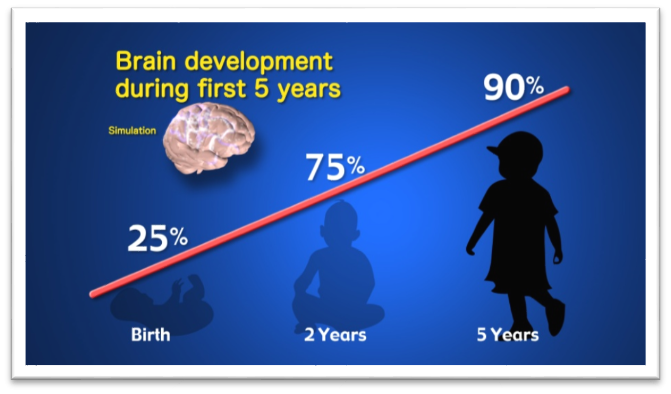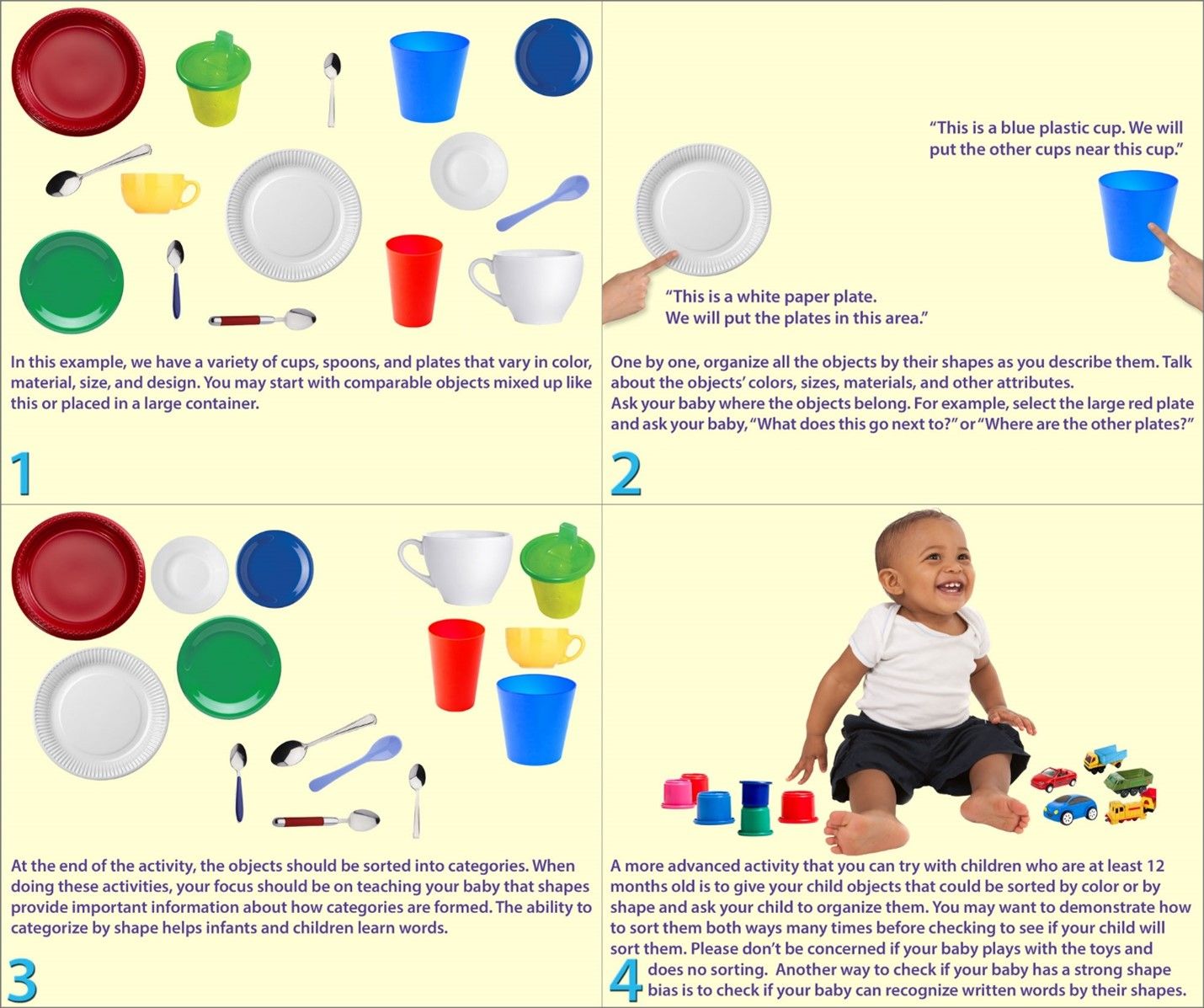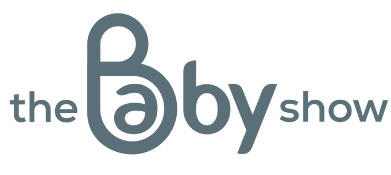)

Tip 1: The more you talk to your baby, the more likely your child will have better language skills.
The more words spoken to a child by age 3 years, the more words understood by the child at age 11 (Hart & Risley, 1995).
The number of words was a better predictor of the size of the child’s vocabulary than the parents’ IQs, family socioeconomic status, or the school the child attended. More recent studies show that babies in better language environments in the first 18 months of life not only understand more words at age 3, but they also have faster brain processing speeds. Infant researchers recommend that people say around 30,000 words a day to infants. This comes to just over 2 words every 3 seconds for 12 hours. It is difficult to talk to your baby in this quantity and it is one of the reasons that I made videos for my babies specifically designed to teach them language skills by following scientific principles of how babies learn.
Tip 2: Learn how to teach your baby language skills.
How you talk to your baby impacts your child’s language learning and brain development. Here are some of the scientific principles to follow:
- Describe your baby’s senses. Talk about what your baby is looking at, hearing, tasting, touching, and smelling. Infant researchers often think of movement as a sense for babies, so also narrate how your child is moving. For example, say, “You are putting your arms up!” as your baby does the action, then say, “You put your arms up!” while stressing the “arms up” part and demonstrating the meaning by putting your arms up.
- Isolate individual words, then use them in sentences. This helps your baby learn individual words and grammar. Please use proper grammar since babies are learning both in the first year of life.
- Make language learning multisensory. Instead of simply talking to your baby, allow your baby to learn about language in the same way they learn about toys and other objects by using more sensory systems. Evidence from numerous studies shows that babies learn more when they have multisensory information compared to learning through only one sensory system. I applied this concept to teach my own babies language skills more than 30 years ago. Babies who see and hear words simultaneously can see and hear where the words begin and where they end which gives them more information than babies who only hear the language. Move your finger under a written word from left to right as you say it. Babies have many thousands of new brain connections every second, so try to say the word at the precise moment that you are pointing to the word from left to right. Next, demonstrate the meaning of the word. If the written word is “ear,” point to the word from left to right as you say it, then touch your baby’s ear. Next, you could say, “This is your ear. You hear with your ear.” as you touch your baby’s ear.
- Teach the shape bias early. The shape bias is defined as the tendency of children and adults to generalise information about an object by its shape instead of more trivial object features such as colour, texture, size, or material. For example, when you see a bowl, you know it is a bowl primarily from its shape and you realise that it could be any colour, of various sizes, and it could be made of ceramic, glass, wood, plastic, or other materials. Infants don’t know this, so if they see only one bowl and it is red, they may think that it “goes with” other red objects instead of other objects with very similar shapes. Children don’t typically have a strong shape bias until after 27 months of age, but there’s research showing that they can be taught this information in about one hour at 17-months of age and with more time before one year of age. Once children eventually figure out that the shapes of objects generally provide more information about the functions of objects, then they learn new words at a faster rate. Therefore, the earlier they have a strong shape bias, the more words they should learn. Babies who learn to recognise written words learn that the shape of the words is more important than their colour, size, texture, or material. You can also teach your baby the shape bias by sorting objects by their shapes much more than you sort them by their colours or other factors. For example, you can sort cups, spoons, balls, and other objects by their shapes. I suggest using a wide variety of different colours, sizes, and materials, so your baby will learn that the shape information is more relevant to whether the object is a cup, spoon, or ball than the other factors. In other words, once your baby has a strong shape bias they will have figured out that the shape of an object typically provides the most important information about the object’s purpose.
- Optimize your baby’s window of opportunity for learning language skills. This is a short time from about birth to about age 4 when it is much easier to learn language skills at a higher level compared to learning later in life. The number of new connections related to language learning peaks before 11 months of age. Early language learning predicts later language learning, how quickly your child thinks, and reading scores later in childhood. About 90% of your child’s brain is developed by age five, so it is important to teach language skills as early as you can. Imagine the positive impact on your baby’s life if you talk most of the day and follow scientific principles about how babies learn.
3. Begin teaching second languages early in infancy even if you don’t speak those languages.
Bilingual infants who learned two languages simultaneously from birth were compared with bilingual infants who learned languages sequentially after mastering the first language. Simultaneous bilinguals had more optimal brain development and improved executive control. Executive control (also called cognitive control) makes flexible thinking and complex goal-directed thought more likely.
It’s easier to learn grammar and pronunciation of languages during infancy than it is later in childhood. When infants learn to understand and speak their native languages, they naturally learn these skills without needing to be taught through rules. When children or adults learn second languages later in school, it far more likely they will need to be taught using the rules of grammar and that they will learn at lower levels.
By six months of age, babies categorise sounds differently based on which language or languages they have heard. When infants hear only one language, they gradually lose the ability to notice very small differences in sounds in other languages.
Even if your family doesn’t speak other languages, but you want your child to be able to learn them at a higher level later, I strongly suggest teaching several languages from early in infancy. I suggest teaching languages in high, medium, or low frequencies based on how important you think it is for your child to learn that language along with available resources to teach those languages. For example, you could allow your baby to learn languages skills in French and English at high frequencies, Spanish at a medium frequency (about 2-4 hours a week), and German and Mandarin in low frequencies (about 1 hour a week). If you do this consistently over the first few years of life, then it should be more efficient for your child’s brain development and easier for your child to learn that language at a high level compared to waiting until your child’s brain is mostly developed at age five years or later.

Dr. Titzer is an infant researcher and works for the Infant Learning Company. He will be giving a talk about how babies learn language skills at The Baby Show NEC Birmingham and Manchester Central . For more information about early learning, go to https://thescienceofearlylearning.com/tips/. You can find his language learning products in 10 languages at https://yourbabycanlearn.com/.

